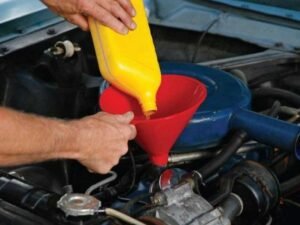When water damage occurs inside a home or business, its impact extends far beyond visible stains or warped flooring. The moisture that lingers after leaks, floods, or pipe bursts can quickly compromise indoor air quality, creating a hidden health hazard. Damp environments become breeding grounds for mold, mildew, and bacteria, all of which release particles and odors that contaminate the air. Over time, this affects not only the structure of a building but also the respiratory health of its occupants. Water damage restoration plays a critical role in reversing these effects, helping restore clean, breathable air and a safe living environment.
Moisture Control as the First Step Toward Clean Air
The foundation of air quality restoration lies in moisture control. When water infiltrates walls, flooring, and ceilings, it seeps into porous materials where evaporation is slow. This trapped moisture feeds mold spores that naturally exist in the air, allowing them to multiply rapidly. Professional restoration teams start by removing standing water and using industrial-grade dehumidifiers and air movers to dry affected areas. This process not only prevents visible damage but also halts microbial growth that could release spores into the indoor environment. Without effective drying, even surfaces that appear dry can harbor hidden dampness that continues to degrade air quality over time. By addressing the root cause—moisture—restoration efforts eliminate the primary factor contributing to indoor air contamination. The faster drying begins, the greater the chances of preventing airborne pollutants from spreading through ventilation systems.
Mold Detection and Safe Removal Practices
Once moisture levels are stabilized, the next focus is on detecting and removing any existing mold colonies. Mold spores thrive within 24 to 48 hours after exposure to moisture and can spread quickly through air currents. These spores produce volatile organic compounds and mycotoxins that cause allergic reactions, respiratory discomfort, and other health problems. Restoration professionals use containment barriers, HEPA-filtered air scrubbers, and antimicrobial cleaning agents to eliminate contamination without dispersing spores into clean areas. Surfaces are thoroughly sanitized, and non-salvageable materials, such as soaked drywall or carpeting, are safely discarded. This phase is crucial to restoring indoor air quality because it removes the most significant source of ongoing pollution. To ensure complete recovery and compliance with health standards, property owners sometimes consult an environmental consultant who can perform air sampling and confirm that mold levels have returned to safe ranges. Such verification reinforces that the air is once again healthy for everyday living.
Air Filtration and Purification During Restoration
While visible cleanup is essential, air purification is equally crucial during the restoration process following water damage. As moisture evaporates and contaminated materials are disturbed, microscopic particles become airborne. Restoration teams use HEPA filtration systems and negative air machines to capture these particles and prevent them from circulating throughout the property. These filters remove not only mold spores but also dust, bacteria, and odors produced by decaying organic matter. Air purification continues for several days to ensure that airborne contaminants are entirely removed. Deodorization techniques, such as ozone or hydroxyl treatments, may also be used to neutralize lingering odors without introducing harmful chemicals. This stage plays a transformative role in improving air freshness and comfort. By focusing on purification as part of the overall restoration process, technicians create a healthier, cleaner environment where residents can breathe easily again, free from the musty odors and irritants that water damage often leaves behind.
Restoring Building Materials and Preventing Future Contamination
Restoration goes beyond cleanup—it also includes rebuilding damaged sections of a property to restore structural and environmental stability. Materials like drywall, wood framing, and insulation often retain moisture that continues to release humidity into the air if not replaced. Removing these compromised components eliminates hidden reservoirs for mold growth and odor retention. Once repairs are complete, surfaces are sealed with moisture-resistant coatings that help prevent future infiltration. This step ensures the long-term protection of both the structure and indoor air.
Additionally, HVAC systems are inspected and cleaned to remove any particles that may have entered during the incident. Filters are replaced, and ducts are sanitized to prevent recirculation of contaminated air. By addressing every level—from structure to ventilation—restoration not only repairs visible damage but also restores the balance of the indoor environment. The result is a home or business that feels fresher, safer, and more resilient against future water-related issues.
Health Benefits of Proper Air Quality Restoration
Clean air after water damage is not just about comfort—it’s a matter of health. Exposure to damp indoor environments and airborne mold spores can lead to respiratory issues, fatigue, and skin irritation. For individuals with asthma or allergies, poor air quality can trigger severe symptoms and long-term health complications. Comprehensive restoration significantly reduces these risks by removing contaminants at their source. Once air quality is restored, residents often notice improvements in breathing, reduced odors, and an overall sense of freshness. Proper ventilation and humidity control further help maintain this clean environment. The health benefits extend beyond immediate recovery—restored indoor air quality supports better sleep, concentration, and general well-being. By combining drying, decontamination, and purification, restoration transforms compromised living spaces into safe, comfortable environments where families can thrive without worrying about invisible health hazards lingering in the air.
Preventive Maintenance for Ongoing Air Quality Protection
Maintaining healthy indoor air after restoration requires consistent preventive care. Regular inspections, proper ventilation, and routine HVAC maintenance help ensure that moisture does not return. Simple practices, such as checking for roof leaks, cleaning gutters, and controlling indoor humidity, can make a significant difference in preventing future water damage. Dehumidifiers and intelligent monitoring systems can alert homeowners to changes in moisture levels before mold has a chance to form, thereby preventing its growth and development. These preventive efforts extend the benefits of restoration and protect against recurring contamination. Educating homeowners about signs of water intrusion—such as musty odors, condensation, or peeling paint—empowers them to act quickly when issues arise. Ongoing maintenance doesn’t just preserve air quality; it also protects the property’s long-term value and livability. With vigilance and care, the results of professional restoration remain lasting, ensuring continued comfort and safety within the home.
Reclaiming Clean Air After Water Damage
Water damage restoration does far more than repair property—it restores health and comfort by renewing the air we breathe. Through moisture control, mold removal, and advanced air purification, the process removes contaminants that threaten both structures and people. Each stage contributes to a cleaner, safer environment that supports well-being and long-term resilience. Once restoration is complete, the air feels lighter, fresher, and free of invisible pollutants that cause discomfort or illness. For homeowners and businesses alike, this transformation represents more than recovery—it’s renewal. By addressing both the seen and unseen consequences of water damage, restoration truly brings life back to indoor spaces where clean air once again flows freely.










